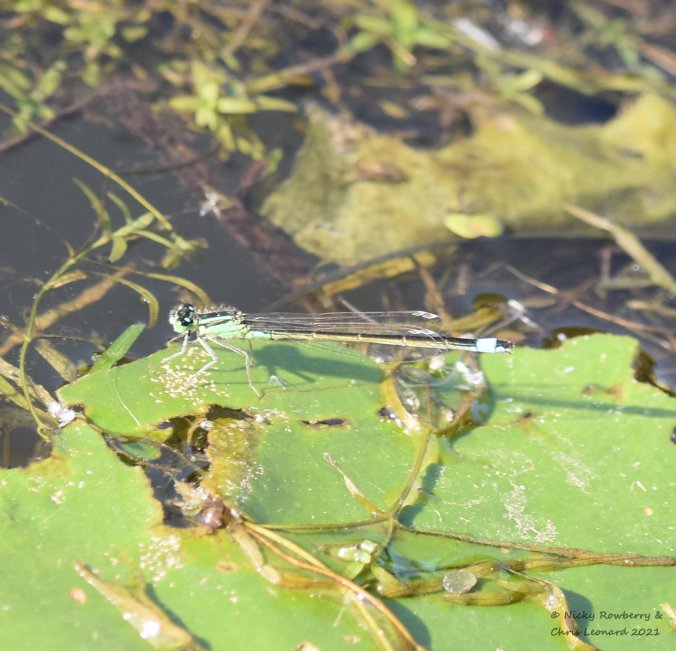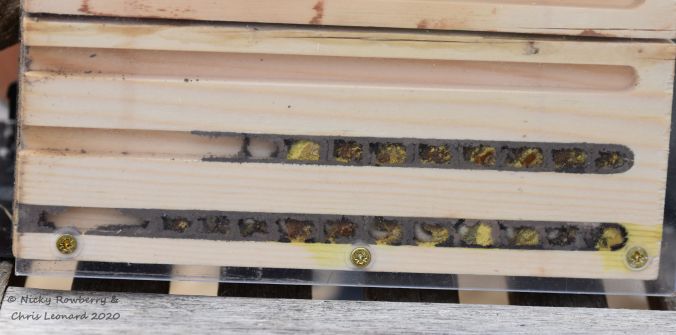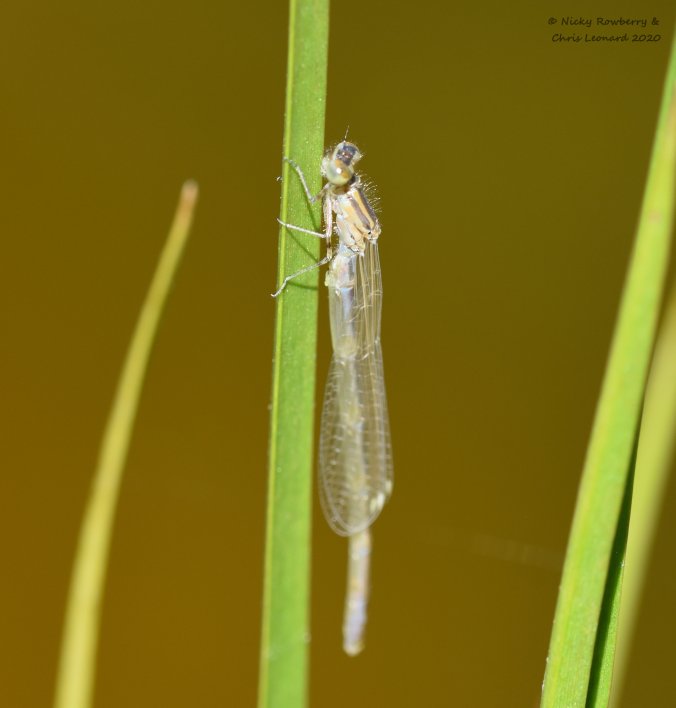It occurred to me as I wrote this that blogging is the modern day equivalent of boring your friends and family to death with a slideshow of your holiday pics – only with blogging you get to inflict them on a much wider audience! So apologies for indulging here and sharing more photos.
So just to prove that we do occasionally look at other things besides butterflies and moths, here are some of the best of the rest. The cottage we’d rented was on the edge of a nature reserve, so we were off to a good start without even going anywhere. There was a path leading own to the nature reserve’s lake (Hawes Water) and it was obviously a bit of a thoroughfare for a lot of wildlife. The trail cameras picked up what I think is a female Roe deer both at night and during the day, plus it was nice to see a hedgehog at dusk too.
The lake itself had plenty of damselflies buzzing around our little jetty. I identified at least 2 species – Azure (below top) and Blue-tailed (below middle – female, bottom – male), both beautiful insects.
Not exactly wildlife, but it was also nice to have a family of Gloucester Old Spot pigs in the field opposite the cottage.
Venturing out from our cottage we visited some amazing sites. Irton Fell, which we’d gone to primarily for the Mountain Ringlet, had plenty of other wildlife too. Despite the windy conditions up there, there were plenty of insects around including these 2 species of Tiger beetle.
There were lots of small birds flitting between rocky outcrops and fences. Bird ID is not a strong point of mine, but I think these are Stonechat and Skylark.
On our last day, freed from the need to search for butterflies, we went to Foulshaw Moss Nature Reserve. Foulshaw is known for it’s Ospreys. Technically we did see them, via a webcam set up on the reserve. They’d got chicks which we could just about make out on the monitor. The nest was a long way from public footpaths (and rightly so), so no chance of photos – but it’s still the closest I’ve ever been to an Osprey, so it felt like a win.
Foulshaw was also known for a species of dragonfly that would be new to us too – the White-faced Darter. There were a few flitting around, but none were settling. One finally landed in front of me on the boardwalk. I managed a quick record shot, planning to then zoom in for a better one. Just got it focused and a small child ran up and scared it off – I may get over this eventually! So here’s the poor record shot.
So here endeth our holiday snaps. A couple of lifers (Ospreys & Darter) ticked off the list if not photographed properly and a few other favourites seen again. Our holidays tend to be primarily wildlife focussed, but just to prove we do manage a few other activities, here’s me doing the inevitable pose next to Eric Morecambe’s statue at Morecambe Bay.






























































































